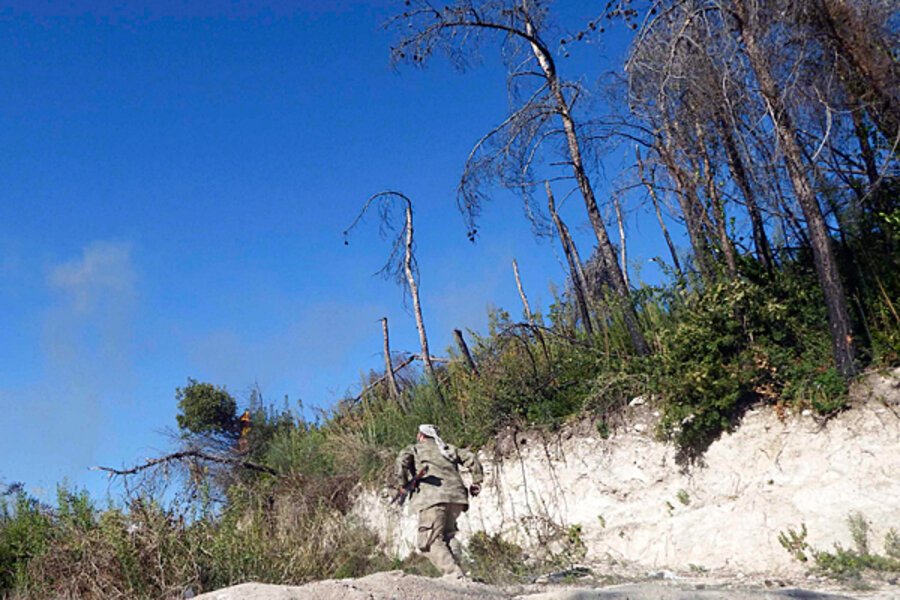Israel blamed for airstrikes at Syrian missile base
| Beirut, Lebanon
Editor's note: This story was updated at 9:54 a.m. Friday to incorporate US comments.
Israel was responsible for a large explosion this week at a Syrian missile base near the Mediterranean coast town of Latakia, an anonymous US official told CNN Thursday. The Israeli government has declined to comment on the claims.
Fingers pointed to Israel almost immediately after the attack, the latest in a string of alleged Israeli airstrikes against advanced weapons systems in Syria possibly intended for Lebanon’s Shiite militant group Hezbollah. Israel has repeatedly said it will take action to prevent the transfer of weapons to Hezbollah, whose raison d'etre is to resist Israel.
The last alleged Israeli air strike in Syria was in early July, when Israeli jets over the Mediterranean fired long-range missiles at a Syrian military base north of Latakia. The alleged target was a consignment of advanced Russian P-800 Yakhont missiles that Israel believed were destined for Hezbollah in Lebanon.
Subsequent reports claimed that the P-800 Yakhonts were not destroyed in the air strike as they had already been moved, raising the prospect of another Israeli attempt to attack the missile consignment.
Hezbollah is a close ally of the Assad regime and Syria is the main conduit for the supply of weapons to the Iran-backed Lebanese group. It has deployed thousands of crack fighters into Syrian battlefronts to aid the Syrian army's fight against rebels.
The explosion reportedly occurred Wednesday evening and targeted an air defense site near the village of Snawbar, 10 miles south of Latakia.
News of the loud blast quickly spread on social media sites. The Latakia News Network, a Facebook page that supports Syrian President Bashar al-Assad, said that the base had been struck by a missile fired from the sea and that it had caused limited casualties and damage.
Satellite images of the facility on Google Earth dated Oct. 5, 2011 show at least three SA-3 anti-aircraft missile launchers armed with a total of 10 missiles. The Soviet-era SA-3 has been in existence since the early 1960s and even with upgrades the system is not as potent as some other air defense missiles in Syria’s arsenal, such as the Russian SA-17.
There are several anti-aircraft sites scattered along Syria’s Mediterranean coast featuring the SA-3 and the older SA-2 systems and it is unclear why the Snawbar site would have been singled out for attack. There are two Syrian military bases nearby, however, one of them containing storage facilities which may mean the target of the alleged attack was misidentified.
Neither the Syrian government nor Israeli authorities gave official comment on the reported attack.
Hezbollah used an Iranian version of a Chinese anti-ship missile to disable an Israeli naval vessel during the month-long war with Israel in 2006.
If it is confirmed that Israel was responsible for Wednesday night’s explosion, it would be the fifth since January. Previous air strikes reportedly targeted SA-17 anti-aircraft missiles, Iranian-manufactured Fateh 110 surface-to-surface missiles, and military bases belonging to the Syrian army’s elite 4th Armored Division.
Israel refuses to claim responsibility for the attacks but has repeatedly warned that it will take action if it believes that “game-changing” weapons, such as air defense systems, are delivered to Hezbollah. Israel has increased the number of flights over Lebanon this year in response to concerns that Hezbollah may seek to acquire additional advanced weapons, according to United Nations diplomatic sources. The forays into Lebanese airspace are breaches of international law and are regularly protested by the UN and the Lebanese government. Israel says they are necessary as long as Hezbollah remains a threat.





